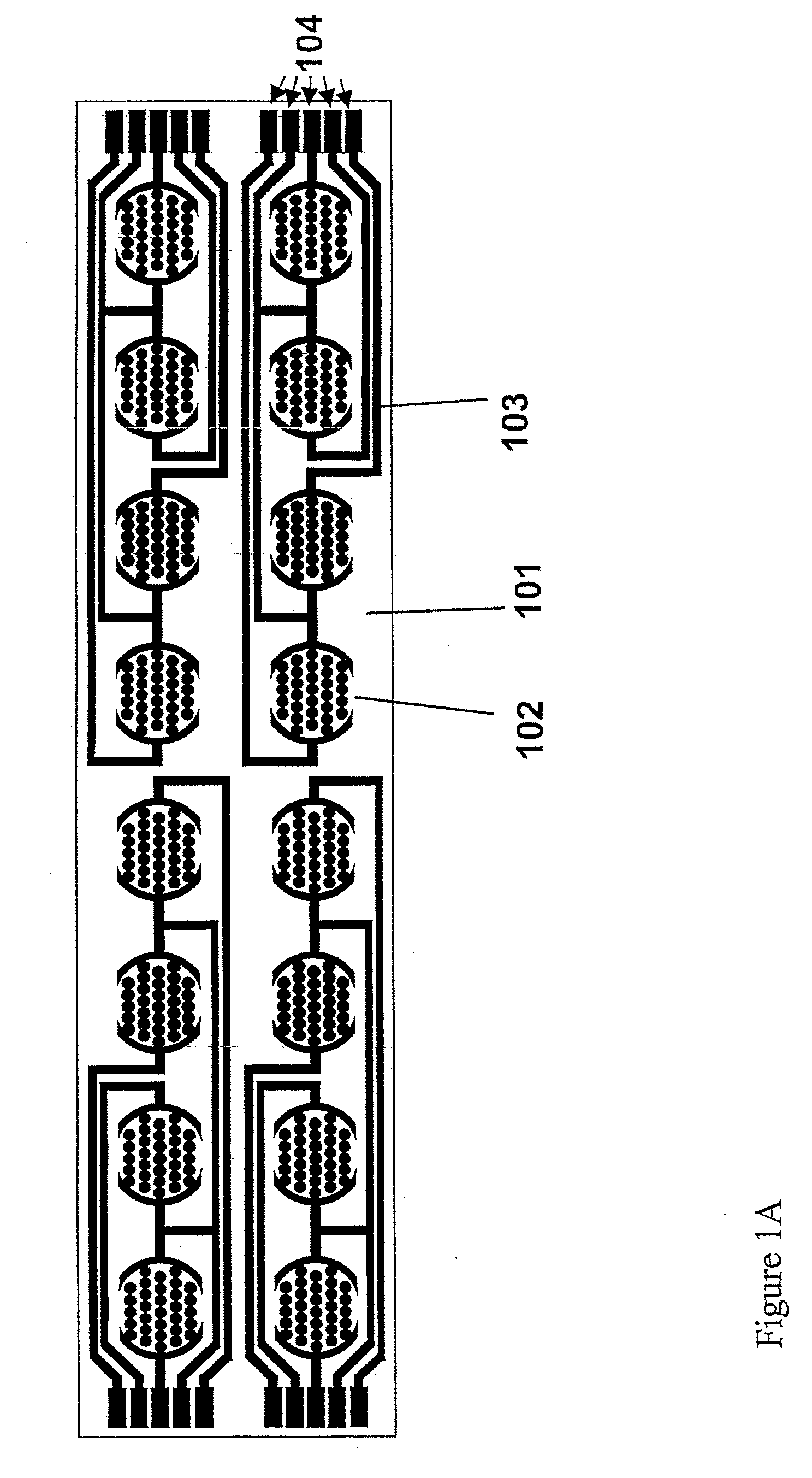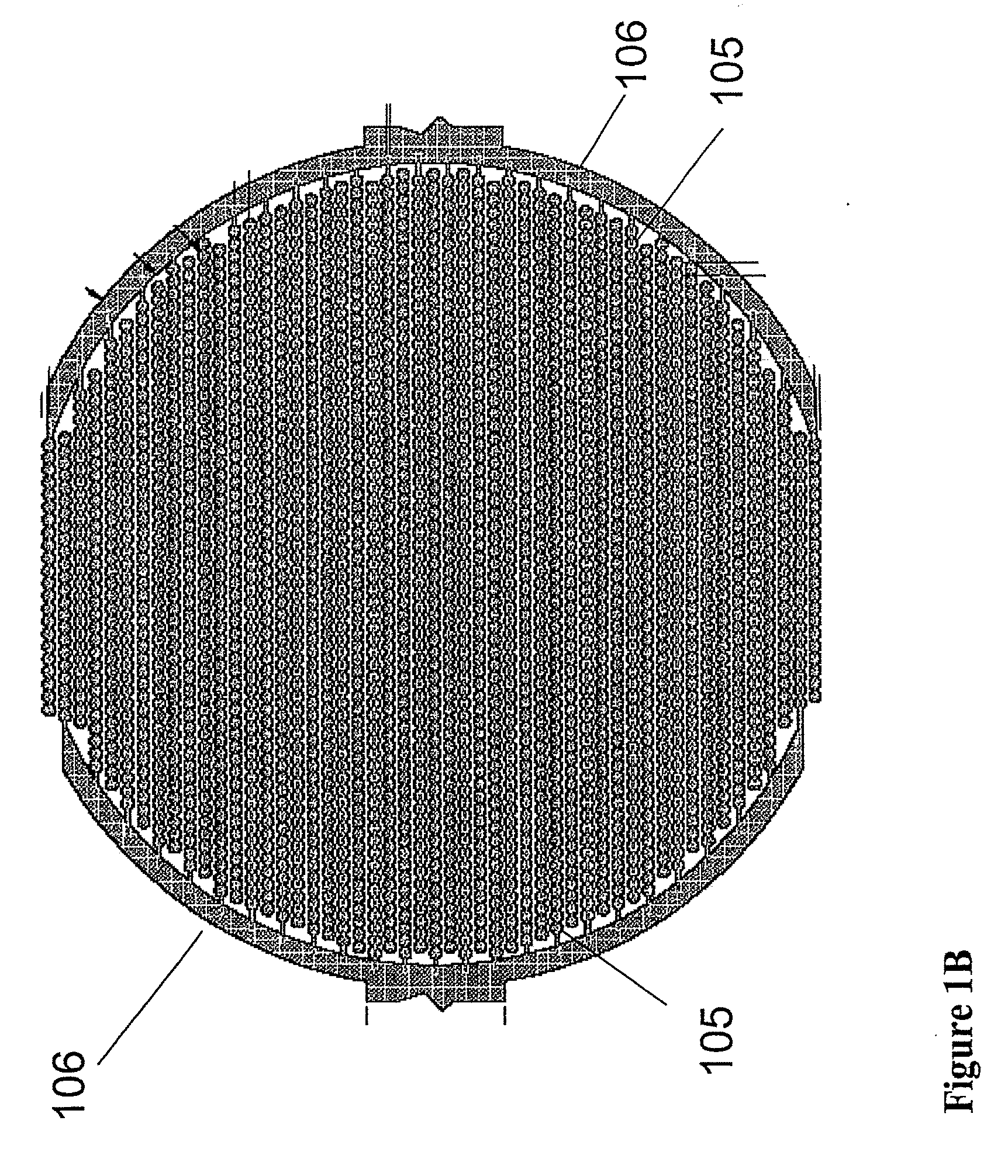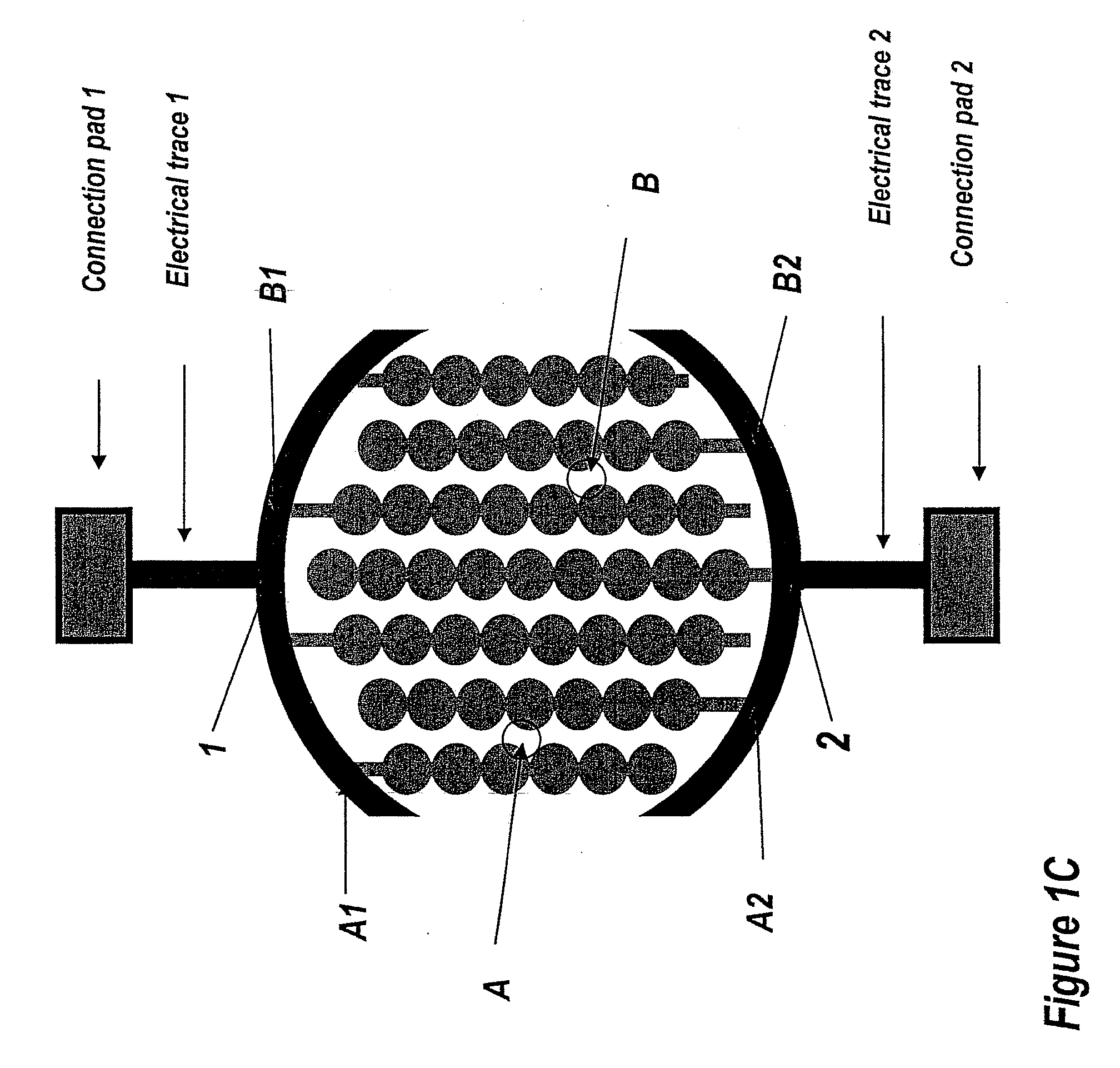Dynamic Monitoring of Activation of Receptor Tyrosine Kinase (RTK) in Living Cells Using Real-Time Microelectronic Cell Sensing Technology
a real-time microelectronic cell and sensing technology, applied in the field of cell-based assays, can solve problems such as cancer, degenerative diseases and inflammation
- Summary
- Abstract
- Description
- Claims
- Application Information
AI Technical Summary
Benefits of technology
Problems solved by technology
Method used
Image
Examples
example 1
Profiling of Dynamic Cell Responses to Anti-Cancer Drugs Using ACEA RT-CES System
[0501]In this study, we used the RT-CES system to dynamically monitor cancer cell responses to chemotherapeutic compounds with characterized mechanisms, and to profile the specific cell response patterns. Thirteen cancer cell lines including cancers of breast, prostate, lung, colon, ovary, kidney, fibroblast, and central nervous system were tested (Table 1). Each cancer cell type was treated with 11 chemotherapeutic compounds, classified as DNA damaging agents, protein kinase inhibitors, anti-mitotic drugs, cell cycle specific inhibitors, protein synthesis inhibitors plus a compound of unknown category (Table 2). Dynamic and dose dependent cell-compound interaction patterns were characterized and summarized for all the tested cell lines and compounds. The profiles for three drugs, doxorubicin, olomoucine and paclitaxel against a panel of 12 different cell lines are presented in FIGS. 9, 10 and 11, respe...
example 2
Cytotoxicity Profiling
Methods
Cells.
[0503]All the cells used in this study were obtained from ATCC and maintained at 37° C. incubator with 5% CO2 saturation. H460, HepG2 and HT1080 cells were maintained in RPMI media containing 5% FBS and 1% penicillin and streptomycin. NIH3T3 cells were maintained in DMEM media containing 10% FBS and 1% penicillin and streptomycin.
Cell Proliferation Assays.
[0504]For each of the cell type, the indicated number of cells was seeded per well in 96× microtiter plates (E-plate™) with incorporated electrode structures in individual wells device in 100 μl of media. The attachment, spreading and proliferation of the cells were continuously monitored every 30 minutes using the RT-CES™ system (a cell-substrate impedance monitoring system. Cell proliferation was monitored for a period of 48-72 hours depending on the experiment. The electronic readout, cell-sensor impedance is displayed as a parameter called Cell Index.
Drug Treatment and Cytotoxicity Assessment....
example 3
Measuring and Monitoring the Morphological Changes Occurring in Chinese Hamster Ovary (CHO) Cells Upon Stimulation of the Muscarinic M1 and M3 Receptors
[0515]As an example, we describe here the use of the ACEA RT-CES™ system to measure and monitor the morphological changes that occur as a result of carbacol treatment of Chinese hamster ovary (CHO) cells which express the muscarinic M1 and M3 receptor.
[0516]CHO cells expressing the muscarinic M1 receptor (CHO-M1) or the muscarinic M3 receptor (CHO-M3) were seeded in ACEA's 16× device (E-Plate) at 20,000 cells / well and the attachment and growth of the cells in the 37° C. tissue culture incubator were monitored in real-time using RT-CES™ system (which includes, for example, a 16× device station or 16× E-Plate station, RT-CES impedance analyzer and integrated software for controlling the impedance analyzer and device station). Cell index curves measured on the RT-CES system are shown in FIGS. 23 and 24. After 22 hours the cells were tre...
PUM
 Login to View More
Login to View More Abstract
Description
Claims
Application Information
 Login to View More
Login to View More - R&D
- Intellectual Property
- Life Sciences
- Materials
- Tech Scout
- Unparalleled Data Quality
- Higher Quality Content
- 60% Fewer Hallucinations
Browse by: Latest US Patents, China's latest patents, Technical Efficacy Thesaurus, Application Domain, Technology Topic, Popular Technical Reports.
© 2025 PatSnap. All rights reserved.Legal|Privacy policy|Modern Slavery Act Transparency Statement|Sitemap|About US| Contact US: help@patsnap.com



